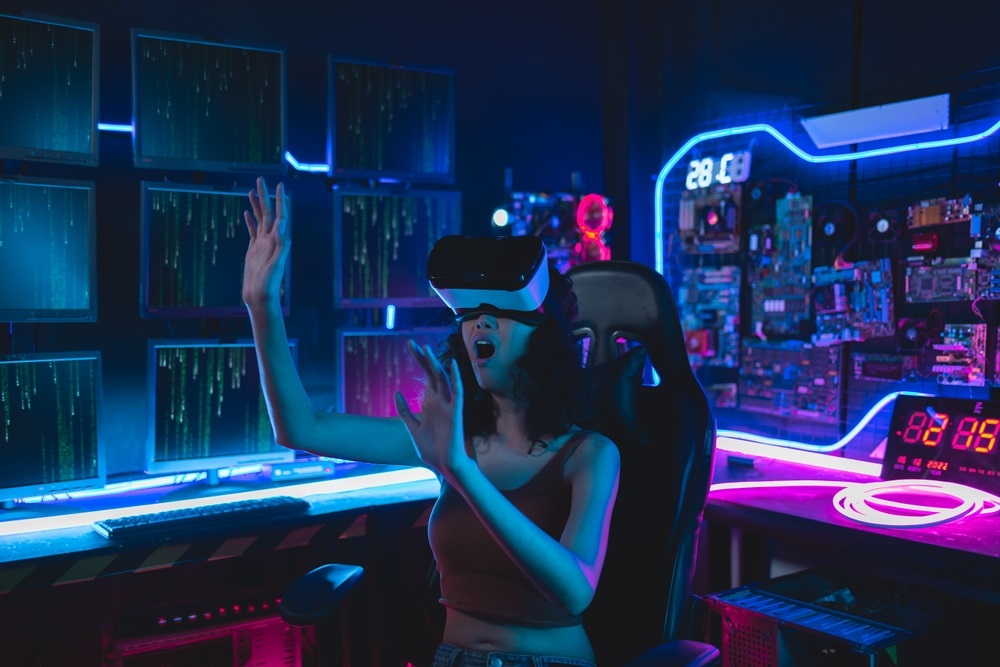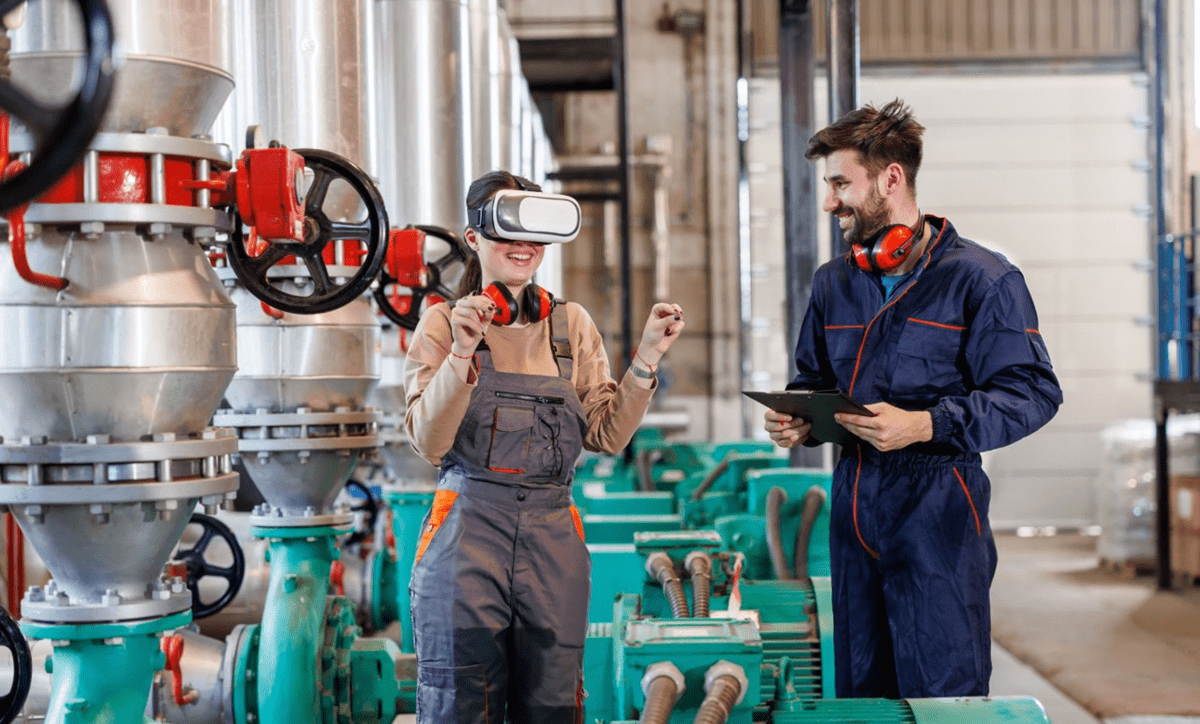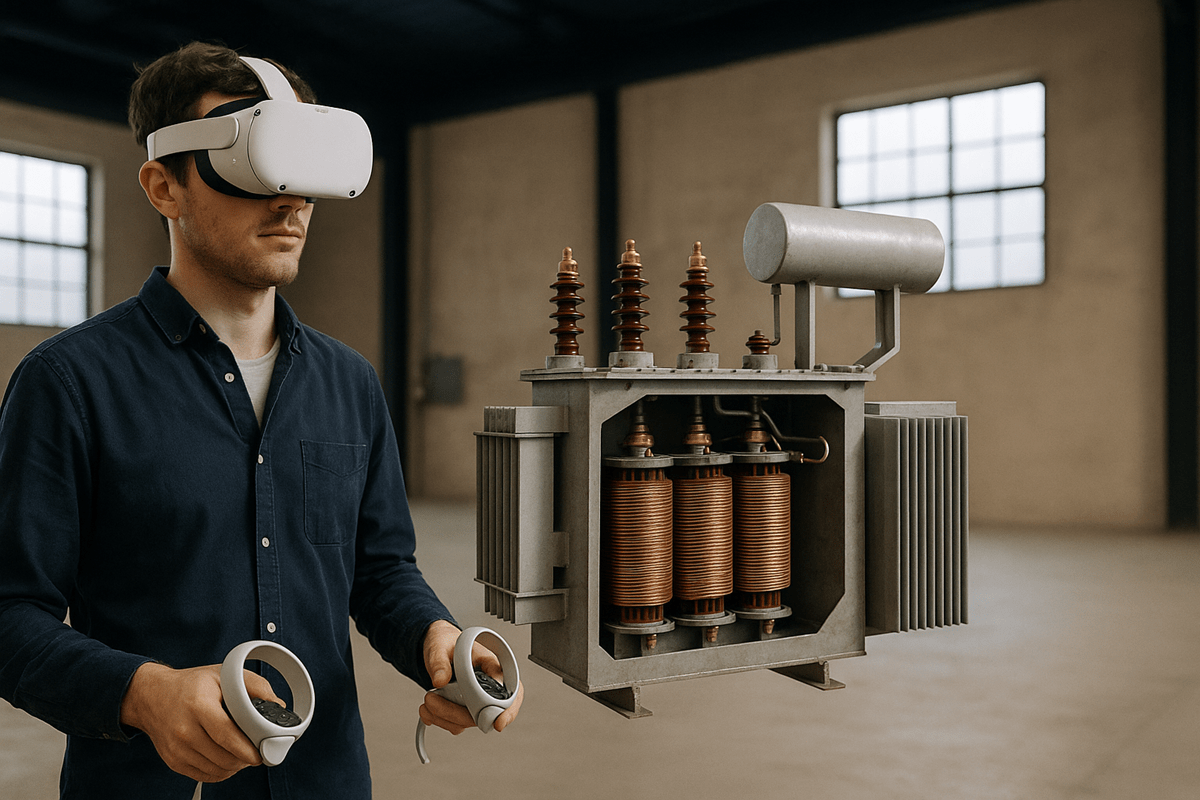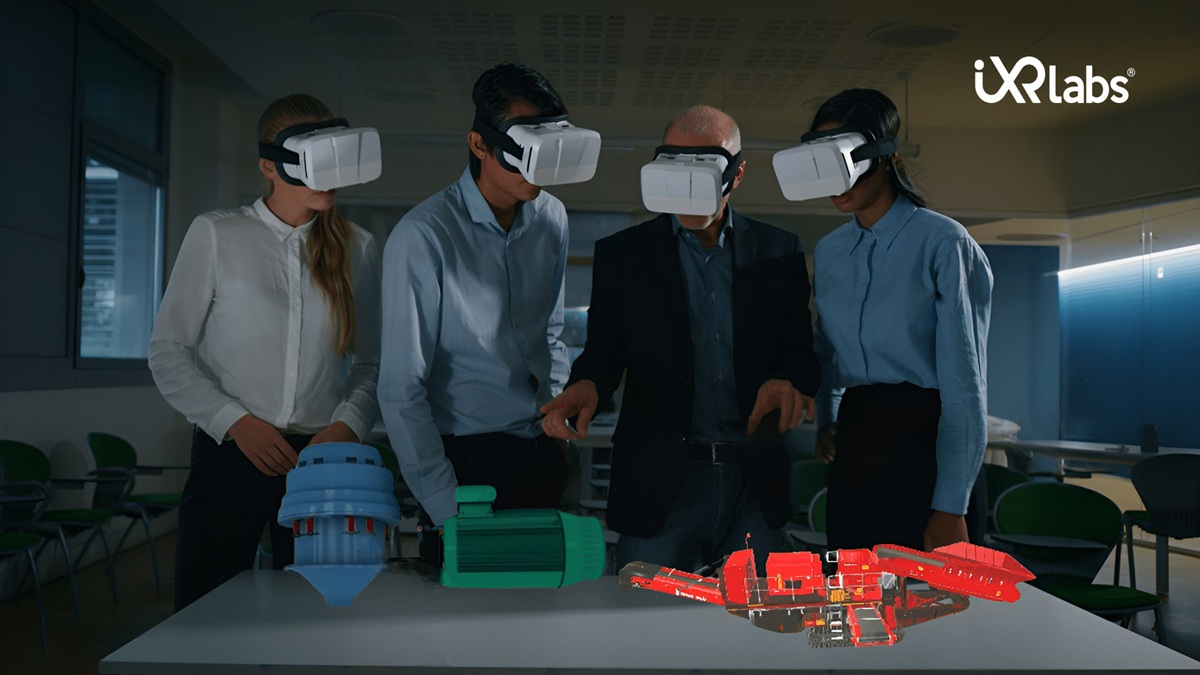How Virtual Learning Environments (VLE) are Benefitting Higher Education
.jpg)
Virtual Reality technology has become a popular tool in educational settings.
Its popularity can be gauged from market data that forecasts the latest trends. –
Fortune Business highlights that the global size of VR in the engineering education market will be $ 13,098.2 million by 2026.
A VR education platform, utilizing virtual learning environments, offers an innovative and interactive learning experience. It leads to higher learner engagement and enhances affective and cognitive learning capacities.
Simultaneously, it promotes active participation and learning through simulation and interaction with virtual objects.
Higher education and vocational training centers use VR for the training of risky procedures. The VLE enables repeated skill training in a risk-free zone, enabling students to master the concepts and skills. This is impossible in a traditional teaching setup.
- The teaching methods in VLE are experiential, innovative, fun, and promote active learning.
- Experiential learning, Skill Mastery, and personalized learning are some useful benefits and these outcomes are driving the adoption of VR for higher education.
Survey results published on the site student.org reported that
90% of teachers favored the use of VR to enhance student performance.
97% of students were keen to attend VR classes, leading to greater attendance
How would you like to learn about the Moon’s surface if given a choice?
Would you rather read about it from a textbook? Or would you opt for a space visit without leaving your class and hop around the moon to study its surface and topography?
That is the power of VR technology!!
Virtual Learning Environments Fosters Higher Learning Capacities

VR is revolutionizing education across all levels with new dimensional learning experiences.
- PNAS observed that active learning enhances student performance in STEM subjects.
- UG students who learn in lecture-based methods are 1.5 times more likely to fail than students who are exposed to stimulating, active learning modules.
Virtual Learning Environments are bringing dinosaurs back to life!!
VR technology is breathing new life into educational content. 3D Simulated classrooms enable people to interact with peers and mentors from anywhere in the world and give a real-world impression.
The digital 3D spaces for students foster peer-to-peer and student-mentor communication and collaboration. VR technology aids academic performance as well as skill development.
The seamless and immersive learning opportunities are result oriented, influence deeper academic insights, and are budget-friendly.
Virtual Learning Environments are truly game changers.
VR offers virtual hands-on learning with the focus shifting to student-centric rather than teacher-led. Learning complex concepts in 3D enhance grasping capabilities and leads to better learning outcomes.
VR Labs offer anytime, anywhere immersive learning possibilities. The risk of developing skills in a risk-free zone allows students to explore and master them confidently. This is important in practices like surgery or repair of hazardous machinery or war zones.
Virtual Learning Environments offer immersive learning, augmenting skills and learning outcomes through digital environments. Immersive learning labs deploy highly specialized, simulated, and augmented environments similar to the physical worlds.
"Ready to transform your higher education experience? Explore the benefits of Virtual Learning Environments (VLE) and take your learning to new heights today!"
Case Uses of Virtual Learning Environments in Higher Education
- Michigan University’s athletic department uses VR to enable potential recruits to tour the campus and experience the facilities from anywhere in the world. This saves time, resources, and money for both the university and the recruits.
- Colorado State University’s Department of Biomedical Sciences, VR lab was the world’s first large-scale deployment of VR in an educational setting. It helped professors show students structural concepts as they exist.
- The University of North Carolina has set up virtual 3D classrooms where students can interact and network with each other.
- Students from Australia and Boston collaborated through VR to build a virtual version of a Boston church. (nonreality)
- Penn State has an entry-level course- Immersive Technologies: Transforming Society through Digital Innovation, or GEOG 107N, to prepare students for their mixed-reality futures.
- The Beijing University of Chinese Medicine uses VR to teach acupuncture
- The University of Westminster, UK, trains criminal law students through VR setups of crime scenes.
Important Market Statistics and VR Applications
What do the future hold for VR technology and its applications?
Let’s assess
• The valuation of the VR market was $ 21.83 billion in 2021 and is forecasted to grow at a CAGR of 15.0% from 2022 to 2030. (Grandview Research)
• The education sector occupies 41% of the usage of VR applications (Finances Online)
• The demand for VR/AR devices is growing after 14 million devices were sold in 2019. (Statista)
• 171 mn people used VR in 2018 (Statista)
• 42.9 mn US citizens use VR monthly (eMarketer)
• 49% of corporates use VR to benefit from real-time information (Finances Online)
• 49% use VR for training and real-life experiences (Finances Online)
• 47% of enterprises enable remote work collaboration (Finances Online)
VR is finding many applications in industry sectors. It is increasingly being used as a potent training and instructional tool via Virtual Learning Environments to train driver pilots, mechanics, defense personnel, designers, etc.
Prototypes created in VR allow engineers to rectify mistakes and save time and money before launch.
Education, healthcare and tourism, and real estate are other prominent sectors where VR is widely used. Tourism and real estate companies can offer customers a tour of their properties and amenities.
 Get the App from Meta Store: Download Now
Get the App from Meta Store: Download Now
Moving forward
The education sector is warming up to Virtual Learning Environments and is opening new possibilities. The engineering and VR medical streams have been active users and have been deployed efficiently to train students.
The future beckons new and innovative pedagogical methods with VR, all of which will profoundly impact higher education. VR environments will catalyze the use of the metaverse in education.
iXR Labs is a leading VR education platform technology provider offering exclusive solutions for the higher education segment and specializing in VR lessons and Labs.
To check out the VR Labs offering from iXR, visit ixrlabs.com.




.png)
.png)